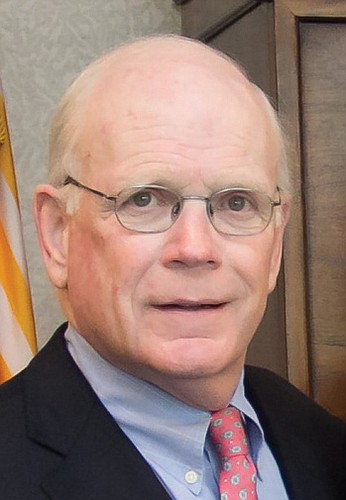
Veteran developer and place-maker Peter Rummell has an idea, and he considers it a big one.
"I don't want to let this sort of idealism slip away," Rummell said Monday during an interview.
Rummell wants to create what he calls "Healthy Town," although that's more of a description than an ultimate name.
It would be a residential community for all ages that focused on health of mind, body and spirit — from offering a "base camp" of health and wellness guidance to focusing on designs that encourage activity to offering gardens that renters and owners could plant and reap for fresh produce.
"Health is going to do to (real estate) value what golf did 40 years ago," Rummell said, referring to the start and proliferation of golf-course communities.
Rummell had designed "Healthy Town" for the 30-acre Southbank JEA site, but he won't stand in the way of a potential Deutsche Bank consolidation on the property.
Deutsche Bank is reviewing the riverfront site for a major office project of at least 300,000 square feet to accommodate its expanding suburban operations, sources have said. JEA issued a Request for Proposals are due May 6 for developers who are interested in buying the property.
Rummell said he would turn his attention to other sites and make way for Deutsche Bank to proceed and bring what he understands eventually could be 4,000 to 5,000 jobs Downtown.
"We had some site plans done on the JEA site that were starting to make sense, but we had to walk away," he said.
The JEA site fits what he considers a good location for "Healthy Town" — a "suburban edge" or "urban edge" site near a Downtown core with space to accommodate what's needed to make a deal work.
What would make it work? As designed on the JEA site, Rummell said the residential and amenity mix to attract all age groups and a range of demographics would have included:
• 700-800 multifamily units for sale and for rent
• A unit mix from studios to penthouses that would attract, for example, residents ranging from new college graduates taking their first jobs to more affluent professionals to retirees.
• Multistory residential buildings of three to four floors that are designed with the stairs up front and the elevators in back, which could entice residents to take the stairs. "If you walk to your fourth floor five times a day, that's a lot of exercise you wouldn't get otherwise," he said.
• 75,000 to 85,000 square feet of retail, food and beverage space to serve residents and visitors.
• "A riverfront cool bar and restaurant."
• Garden space for rent that encourages residents to plant and reap their produce, but would be tended by staff if the residents prefer.
• The "hardware" of fitness centers and amenities that encourage a healthy lifestyle.
• Most important, he said, is the "base camp" and software services that would be staffed by people who could help residents with questions ranging from finding a church to booking an appointment with a medical center.
"I'm convinced there's an opportunity there," he said.
Rummell said he has been working on the idea for at least 18 months and the site plans for four months.
"No one has done it. I want to do it here," he said.
Rummell said the first "Healthy Town" will require fine-tuning to strike the correct balance.
He also is considering some questions about "Healthy Town" that include how do you attract the residents who would appreciate it?
"This has to be like-minded but not 'Stepford Wives,'" he said.
In other words, how does a family become healthier by living there without sensing they have to be fanatical about their lifestyles.
Another question is measuring its effectiveness.
"How do you prove success?" he asked.
"In year three you'd have to prove you've made a difference," he said. It could be measured by improved health.
And he emphasized it would not be a senior living center, although retirees would be a part of the lifestyle mix.
Rummell chaired the global Urban Land Institute for two years, from mid-2011 to mid-2013, and said he led it to make "healthy places" its worldwide theme for two years.
In fact, the ULI's "Ten Principles for Building Healthy Places" is a topic today at the ULI North Florida meeting at the Hyatt Downtown to discuss "The Future of the Northbank Riverfront District."
Keynote speaker Richard Jackson will talk about "How to Put People First and Make Healthy Choices Easier."
Jackson is the chair of Environmental Health Sciences at UCLA's School of Public Health. He is a former director of the U.S. Centers for Disease Control and Prevention's National Center for Environmental Health.
After his presentation, panelists will lead a discussion about applying the 10 principles to the Northbank.
The 10 principles are:
• Put people first
• Recognize the economic value
• Empower champions for health
• Energize shared spaces
• Make healthy choices easy
• Ensure equitable access
• Mix it up
• Embrace unique character
• Promote access to health food
• Make it active
Rummell, 68, has been active in the real estate development industry for more than 40
years, having served as CEO of Nicklaus Companies in Palm Beach, CEO of The St. Joe Co., chairman of Walt Disney Imagineering and vice chairman of Rockefeller Center Management Corp.
"Healthy Town" is his next idea.
"I believe with all my heart and soul it is a big idea and I want to be involved with one more big idea before I hang it up," he said.
@MathisKb
(904) 356-2466